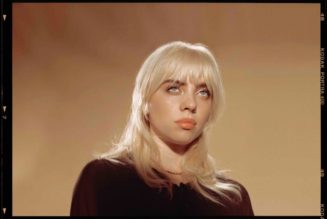
Forever No. 1 is a Billboard series that pays special tribute to the recently deceased artists who achieved the highest honor our charts have to offer — a Billboard Hot 100 No. 1 single — by taking an extended look back at the chart-topping songs that made them part of this exclusive club. Here, we honor the late Helen Reddy by diving into the third of her three Hot 100-toppers, the surreal story song “Angie Baby.”
The mid-’70s marked a golden age for the story song. Whether murder mysteries like Vicki Lawrence’s “The Night the Lights Went Out in Georgia,” first-person historical fiction like Paper Lace’s “The Night Chicago Died,” or role-playing tales like Cher’s “Half-Breed,” richly plotted and detailed musical narratives enraptured top 40 listeners and shot to the top of the Billboard Hot 100 in the heart of the Me Decade. But no other story song was quite like Helen Reddy’s “Angie Baby.”
[embedded content]
Written by California singer-songwriter Alan O’Day, “Angie Baby” tells the tale of the title character, a friendless and “touched” young girl who spends her life listening obsessively to rock and roll radio, imagining a life of excitement and romance through the songs she hears. In the second verse, a neighbor boy “with evil on his mind” stalks and threatens Angie, menacingly promising to “show [her] how to have a good time.” So she traps the boy in her radio, keeping him as her “secret lover” inside the FM dial while everyone in the neighborhood assumes he’s dead.
Wait, what? The late-song twist in “Angie Baby,” unveiled over its bridge and third verse, left a lot of listeners understandably confused, and neither singer nor writer were much interested in providing further explanation. “That’s everybody’s question,” Reddy told Fred Bronson in The Billboard Book of Number One Hits when asked to dish on the song’s unusual climax. “I’ll never tell you.” O’Day said in the same book that he actually felt the whole thing was pretty straightforward: “I thought I spelled out what happened. It’s a fantasy trip but it’s real clear… I never intended it to be [a mystery].”
But whatever mystery fans found in it certainly added to the intrigue around the song, which debuted at No. 60 on the Hot 100 on the chart dated October 19, 1974. It shot up from there, and replaced Harry Chapin’s “Cat’s in the Cradle” atop the listing on December 27th of that year — the fastest of Reddy’s three trips to No. 1 on the chart. Listener debate about the fates of Angie and her would-be tormentor certainly helped the song’s acceleration: “The very thing that made the song a hit was what happened to the guy in the song,” O’Day claimed.
Of course, “Angie Baby” had a pretty good chance of being a smash regardless, based solely on the chart pedigree of the artists involved. O’Day had become a reliable top 40 scribe, penning hits for Bobby Sherman (“The Drum”), Cher (“Train of Thought”) and the Righteous Brothers (“Rock and Roll Heaven”), the latter of which had taken him to No. 3 on the Hot 100 in July of that year. And of course, Reddy was among the most consistently successful hitmakers of the decade’s first half, with two chart-toppers already to her credit in 1972’s “I Am Woman” and 1973’s “Delta Dawn.” In the year following the latter’s ascendance, she had yet to return to the chart’s top, but had still notched a number of major hits, including the swaggering character study “Leave Me Alone (Ruby Red Dress)” (No. 3) and the touching mother-and-daughter ballad “You and Me Against the World” (No. 9).
“Angie Baby” marked something of a new sound for Reddy. Most of her signature smashes to that point were big pop songs influenced by country folkiness and gospel-tinged soul, but “Angie” had a bit more of a sleek R&B sheen to it — thanks to producer Joe Wissert, who would later be nominated for a Grammy for his work on Boz Scaggs’ classic blue-eyed soul LP Silk Degrees. Wissert turns down the revival-tent energy of Reddy’s prior hits for something a little smoother and more seductive, with a crisp drum shuffle, gleaming electric piano and a tensely insistent shaker hiss giving depth to its slow groove. Reddy’s vocal never quite reaches the peaks of “I Am Woman” or “Delta Dawn,” achieving a sort of pitying restraint as her voice goes soft and wistful on the chorus lyric, “Livin’ in a world of make beliiiiiiiieve…” before snapping back for the more down-to-earth, “…well, maybe.”
While its plot may never totally make sense — O’Day has since explained that Angie “literally shrank [the boy] down into her radio, where he remained as her slave whenever she desired him to come out,” which, sure — “Angie Baby” works mostly because of the sympathetic portrayal of its heroine, relayed by Reddy with clear affection and compassion. Angie is likeable from the song’s opening lyrics, described as finding all the comfort, stimulation and connection she needs in life from her radio — a feeling most young music fans can relate to, doubly so for the early rock days before a lot of other accessible youth culture outlets existed in the same way. While O’Day’s first draft implied Angie to be mentally challenged, the writer smartly listened to his therapist’s advice and turned her from being “a little slow” to “a little touched,” turning Angie into more of a dreamer, just a little removed from reality.
The song further endears its protagonist to listeners by giving her the mysterious powers that she wields against her malicious neighbor in the song’s bizarre bridge, neutralizing his threat simply by blasting her radio at him, then turning him down along with the volume. The song was interpreted by some as a feminist anthem for the way Angie totally flips the script on her male predator — no doubt also influenced by Reddy’s own history with “I Am Woman” — but it could just as easily be interpreted as a Bill & Ted-like testament to the power of rock and roll, and the spiritual strength it gives its practitioners. (And while the song itself doesn’t scan as being particularly rock, it does give a sort of hat tip to the then-Greatest Rock and Roll Band in the World with its titular heroine, who O’Day admits was “probably named from the Rolling Stones’ song ‘Angie,’” a Hot 100 topper the prior October.)
While she’d hit the top 10 once more the breakup ballad “Ain’t No Way to Treat a Lady” in 1975, “Angie Baby” would mark the final trip to the Hot 100’s summit for Reddy, as disco and arena rock took over in the decade’s back half and her hearty brand of soft rock fell somewhat out of fashion. So too did the story song, which still popped up sporadically throughout the remainder of the decade, but never again had the cultural omnipresence it would from 1972 to 1974. However, O’Day himself would rise again in the late ’70s, scoring another No. 1 — this time as a recording artist — with 1977’s lightly strutting love song “Undercover Angel,” whose memorable pre-chorus hook (“I said, ‘Wha?” She said, “Ooo-wee.” I said, “All right.” She said, “Love me, love me, love me.”) left precious little open to narrative interpretation.









